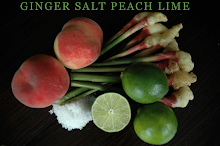
I'm only on page 55, nearing the end of the a's in Shizuo Tsuji's alphabetical introduction, and already I've run upon azuki beans. I'm told this is the name of red beans, those that make up sweet red-bean paste and festive red rice, two of my favorite treats from Japan. Instructions for making sekihan (red rice) and an (the sweet paste) follow in the next few hundred pages. This, I think, is going to be fun.
Tsuji wrote "Japanese Cooking: A Simple Art" more than 25 years ago for a western audience who wouldn't have known agemono if it had bitten readers like me on our noses. Now, many of us know better and would gladly nibble as much tempura and other Japanese fried foods as our skinny jeans will allow.
Today, American weddings come with sushi stations and college students rely heartily on ramen. But back in 1980, Tsuji couldn't fathom the current popularity of raw fish in our red states, and frankly neither could many of us living there. I remember first seeing sushi in "The Breakfast Club." Watching Molly Ringwald eat slices of raw fish over rice -- stored in a box under her chair instead of in a refrigerator! -- made me long for a Capt. Crunch sandwich with a pixie stick chaser.
Tsuji knew better. His book was the first in English to describe Japanese food, and he wanted people like me to look beyond the unfamiliar and see the simplicity, seasonality, purpose, and delicacy of Japanese cooking. It was a daunting task, of both research and translation. Even M.F.K. Fisher, who wrote the introduction to the 1980 edition, worried that readers would fail to trust her recommendation. She was friends with Tsuji and had traveled to Japan to study with him. She fell in love with the food, and upon returning to the states found her meals too buttery, heavy and overflavored. She encouraged readers to look beyond the chopsticks and dashi and realize that Japanese food, like any food worth eating, starts with fresh ingredients and careful consideration by the cook.
Tsuji put it more simply: "Food is only good if you enjoy eating it." I can't wait to enjoy more.








